The following answer assumes you have already found the positions of the lines in the image. This however can be done "easily" by directly looking at the pixels and seeing if they are in a "line". Usually it is easier to detect this if the image has been deskewed first as well, i.e. Rotated so the rectangle (pool table) is more like this: [] than like /=/. Then it is just a case of scanning the pixels and if there are ones of similar colour alongside it assuming a line is between them.
The code works by looping over the lines found in the image. Whenever the end points of each line falls within a tolerance on within the x and y coordinates it is marked as a corner. Once the corners are found I take the average value between them to find where the corner lies. For example:
A horizontal line ending at 10, 10 and a vertical line starting at 12, 12 will be found to be a corner if there is a tolerance of 2 or more. The corner found will be at: 11, 11
NOTE: This is just to find Top Left corners but can easily be adapted to find all of them. The reason it has been done like this is because in the application where I use it, it is faster to sort each array first into an order where relevant values will be found first, see: Why is processing a sorted array faster than an unsorted array?.
Also note that my code finds the first corner for each line which might not be applicable for you, this is mainly for performance reasons. However the code can easily be adapted to find all the corners with all the lines then either select the "more likely" corner or average through them all.
Also note my answer is written in C#.
private IEnumerable<Point> FindTopLeftCorners(IEnumerable<Line> horizontalLines, IEnumerable<Line> verticalLines)
{
List<Point> TopLeftCorners = new List<Point>();
Line[] laHorizontalLines = horizontalLines.OrderBy(l => l.StartPoint.X).ThenBy(l => l.StartPoint.Y).ToArray();
Line[] laVerticalLines = verticalLines.OrderBy(l => l.StartPoint.X).ThenBy(l => l.StartPoint.Y).ToArray();
foreach (Line verticalLine in laVerticalLines)
{
foreach (Line horizontalLine in laHorizontalLines)
{
if (verticalLine.StartPoint.X <= (horizontalLine.StartPoint.X + _nCornerTolerance) && verticalLine.StartPoint.X >= (horizontalLine.StartPoint.X - _nCornerTolerance))
{
if (horizontalLine.StartPoint.Y <= (verticalLine.StartPoint.Y + _nCornerTolerance) && horizontalLine.StartPoint.Y >= (verticalLine.StartPoint.Y - _nCornerTolerance))
{
int nX = (verticalLine.StartPoint.X + horizontalLine.StartPoint.X) / 2;
int nY = (verticalLine.StartPoint.Y + horizontalLine.StartPoint.Y) / 2;
TopLeftCorners.Add(new Point(nX, nY));
break;
}
}
}
}
return TopLeftCorners;
}
Where Line is the following class:
public class Line
{
public Point StartPoint { get; private set; }
public Point EndPoint { get; private set; }
public Line(Point startPoint, Point endPoint)
{
this.StartPoint = startPoint;
this.EndPoint = endPoint;
}
}
And _nCornerTolerance is an int of a configurable amount.


